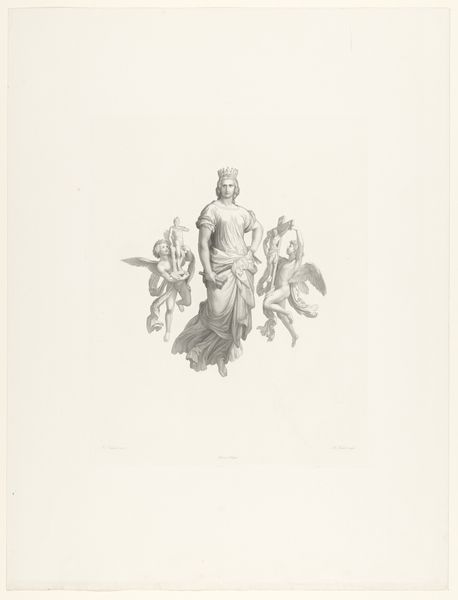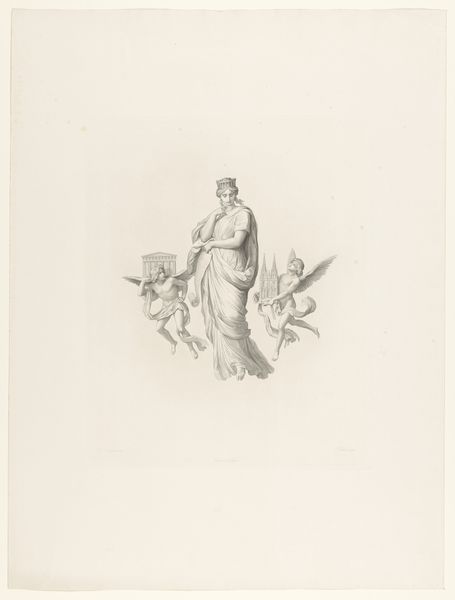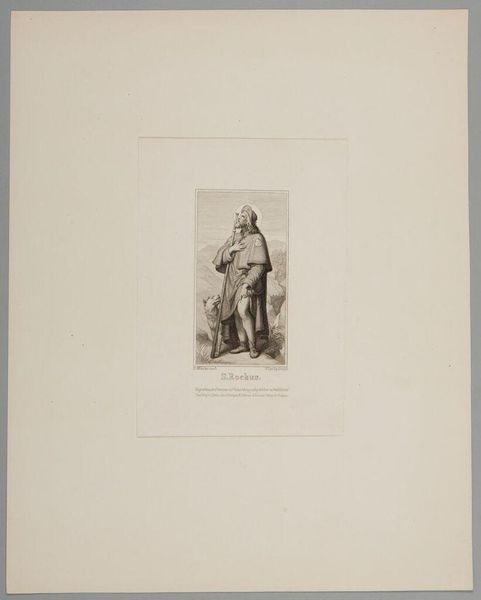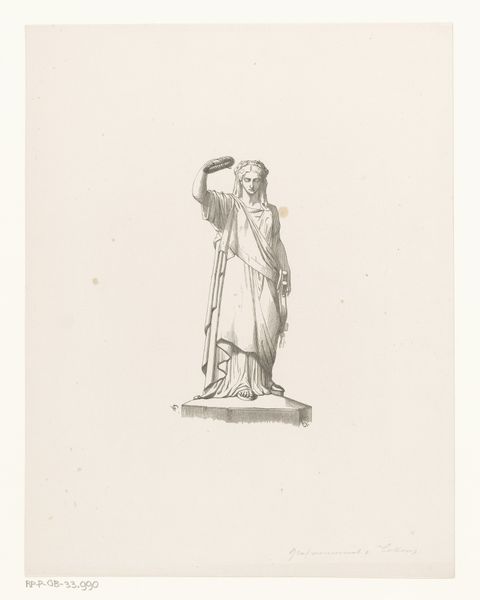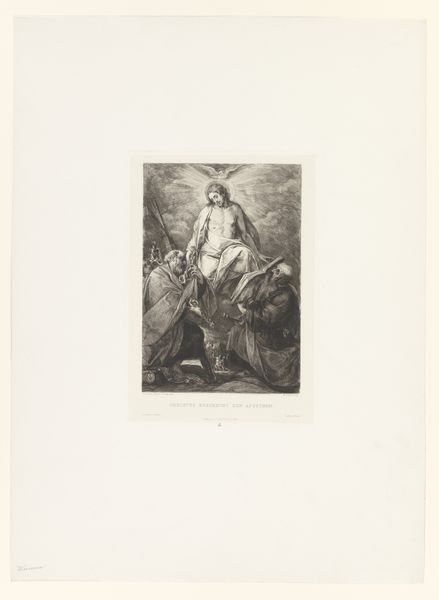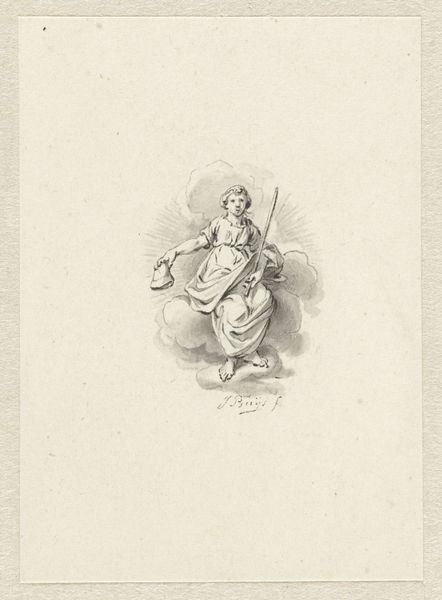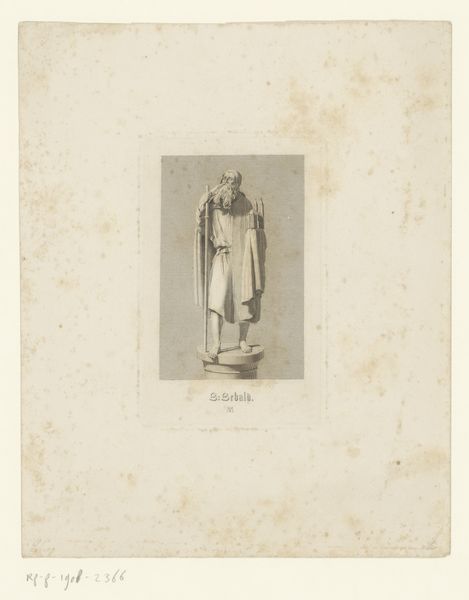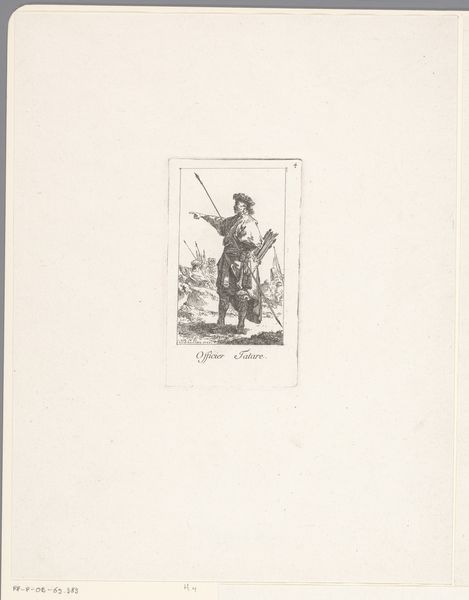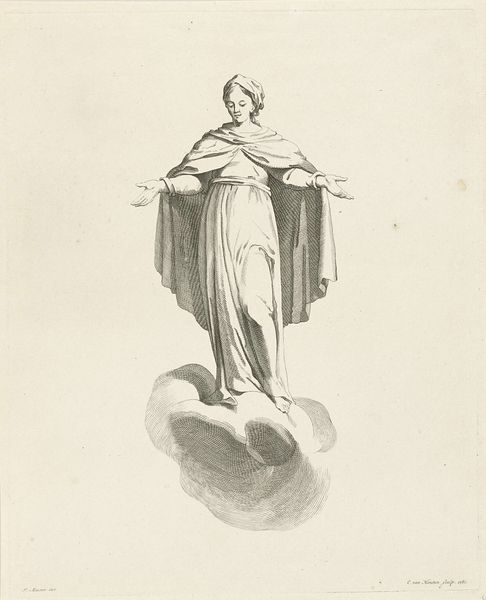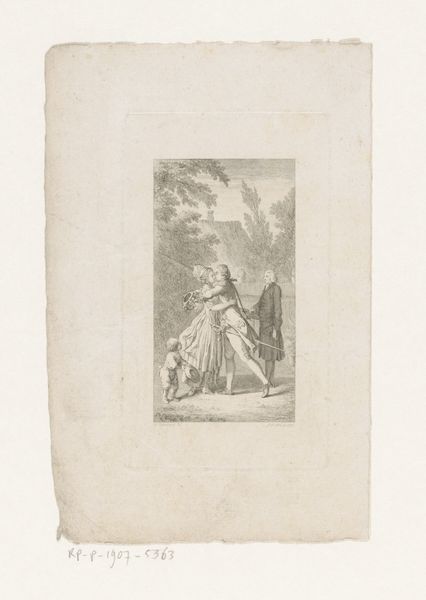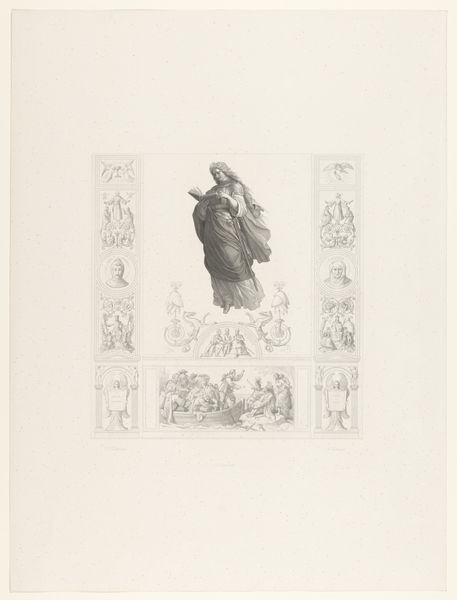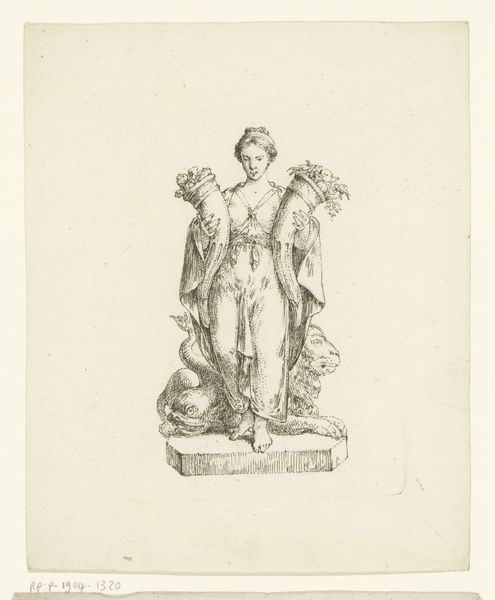
drawing, pencil
#
pencil drawn
#
drawing
#
allegory
#
neoclassicism
#
pencil sketch
#
charcoal drawing
#
figuration
#
pencil drawing
#
pencil
#
history-painting
#
academic-art
Dimensions: height 496 mm, width 409 mm
Copyright: Rijks Museum: Open Domain
Editor: This is Pictura, a pencil drawing created sometime between 1833 and 1890 by Paul Sigmund Habelmann, currently held at the Rijksmuseum. It has such a light and airy feel to it, almost ethereal. What strikes you most when you look at it? Curator: Immediately, I see the echoes of neoclassicism. Consider the idealized figures and allegorical representation so prevalent during that era. Habelmann situates this drawing within a lineage of artists who saw art-making itself as a morally uplifting pursuit. Editor: That’s interesting. I can definitely see the classical influence in the flowing robes and the almost goddess-like figure. Do you think the "academic art" tag is relevant? Curator: Absolutely. The academic style emphasizes precision, adherence to established techniques, and the importance of history-painting and allegorical subjects like the one here. Think about the role of the Rijksmuseum, where this is housed, as a preserver and promoter of such traditions. It inherently lends an air of institutional authority, don't you think? Editor: Definitely, it feels like part of a bigger system of artistic validation. It makes me wonder about who was supposed to be viewing this and how it circulated. Was it meant for public display or private study? Curator: Precisely. Was this a study for something larger, perhaps intended for the salon system, or a piece meant to circulate amongst an academic circle? Thinking about its purpose reframes how we see its value, both artistically and historically. Editor: That makes so much sense. Considering the context shifts my perspective from just appreciating its aesthetic qualities to thinking about its role in shaping artistic values and social norms. Curator: And how the act of drawing itself was viewed as an important foundation in art academies. The drawing served a social function just as much as an aesthetic one. Editor: I hadn't thought about that. This was so enlightening, it gave me a much better idea of the deeper historical context for academic drawings. Curator: Indeed. By looking beyond the image itself, we start to uncover the layers of meaning embedded within its historical moment.
Comments
No comments
Be the first to comment and join the conversation on the ultimate creative platform.
